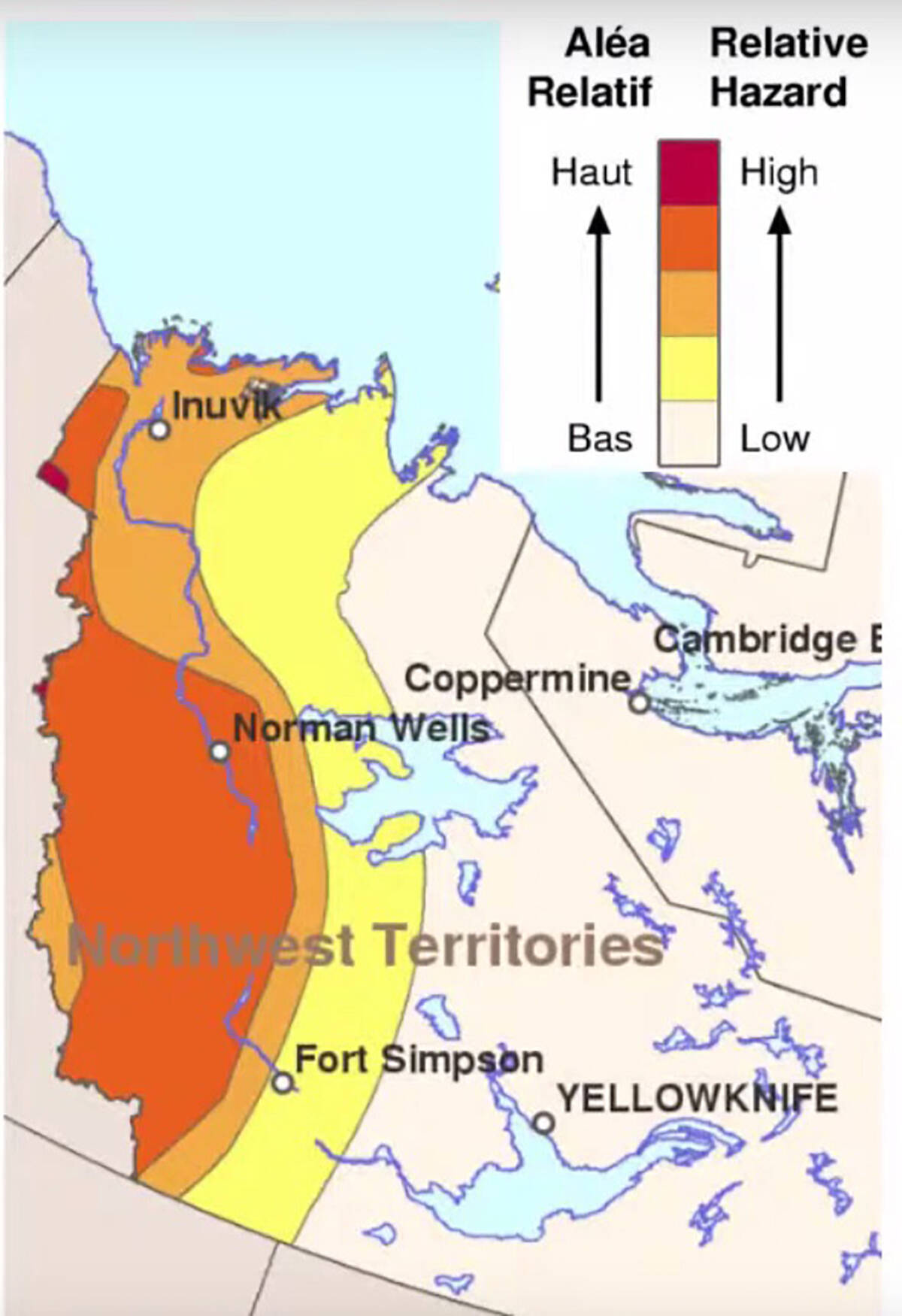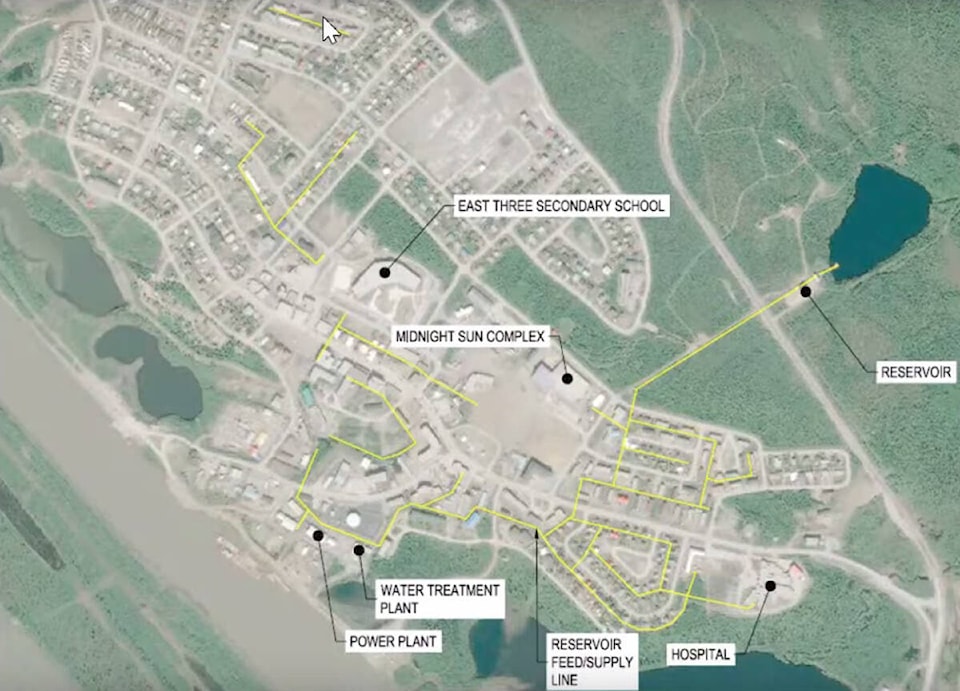Engineers working on the maintenance and upgrading of Inuvik’s utilidor system have an artistic proposal for the Duck Lake Road bypass.
With plans to replace the old utilidor crossing the major roadway, McElhenney engineering division manager Dave Brown proposed using the side panels to display public art during town council’s Jan. 24 committee of the whole meeting.
“As part of the the design process, some of the key things that we wanted to do was to create an opportunity to celebrate community,” he said. “Ensure that we’re we’re introducing some essence and theme into the design of the bridge.”
Also being floated for the new design is a dedicated pedestrian pathway along the road and better decals to alert drivers of the height limits under the utilidor.
An alternative to a single piece of public art could be panels intended to be swapped out, to allow for seasonal changes like Christmas displays or regular showcasing of local talent. Coun. Kurt Wainman suggested a L.E.D. information sign would be the best choice.
Town councillors concluded at their Jan. 26 meeting a permanent display would be the better option, for structural and logistical regions. The town will begin reaching out to local artists for input at an upcoming date.
Work on rehabilitating Inuvik’s aging utilidor system, which is quite unique among Arctic communities, has been underway for the past decade. With an estimated $80 million price tag to completely modernize the system, the town has been working on the system by piecemeal.
Last year, a major connection at the the end of Boot Lake Road near the water treatment plant was replaced with modern piping and pilings. McElhenney engineer Michael Maltais said the replacement couldn’t have come soon enough.
“When we actually started to demolish this the (backhoe) just tapped this section of utilidor and it pretty well fell over with no effort at all,” he said. “So we’re pretty happy it’s no longer in service and something new is in place.”
Maltais noted the original utilidor built when the town was first constructed has performed well past expectations, much of it outlasting newer utilidor additions that were put in place later during the 1970s and 80s. Consequentially, much of the newer utilidor needed to be replaced first and the older utilidors are only now coming into focus. However, many of valves in the old utilidor system are nearing double their lifespan and are no longer operable. The town is working on means of bypassing the valves with new lines.
Adjustable pilings in the newly installed utilidors will allow public works to adjust the height of the pipes to keep up with the freeze-thaw cycle of the soil, which should eliminate a significant structural problem with the network. As the piles are made of steel, they won’t rot like the current wood pilings holding up much of the town’s water supply.
Replacing those is the next vital step. Maltais pointed out Inuvik is within an earthquake zone and with the rotted pilings a decent-strength tremor could knock out a line, which could have catastrophic effects on the town’s water lines as the system is circulatory in nature.
“Some of the old sections of pipe are very fragile on their wood structures very rotten and an earthquake could have significant consequences if it was a fair amount fair size,” he said, adding the town’s maintenance was dealing with a water line break the day before he gave his presentation. “Because the whole system is circulated, if you get a large break that you could freeze up sections and lose more pipe than you wanted to. (If there was) catastrophic failure or collapse of a large section of utilidor would would most certainly be months of outages depending on where it happened.
“The biggest issue of the whole system is really the wood pilings um they are they are rotten well past their service life. Maintenance is increasing every year because of cross-jacking rots failures.”
Maltais added there remains about 6,200 metres of utilidor in the system to be replaced.
In addition to the ailing utilidor network, another cost creeping up on the town is many of its bridges.
Noting the decks of the bridges are in good shape, Maltais advised the town the rest of the structures — particularly the wood liners — have rotten and soil is beginning to work its way through the gaps.
“There’s several locations where the town has repaired these to to extend the life of the bridge,” he said. “But the actual bridge decks themselves are all in pretty good shape.”

